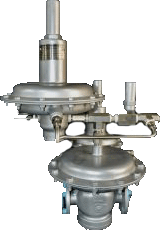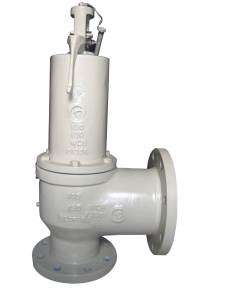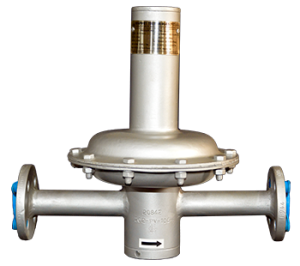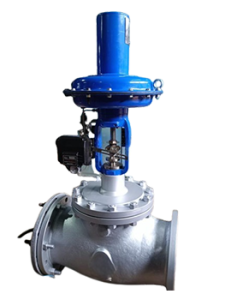In every pressurized system, safe operating conditions must be maintained to avoid accidents, equipment failure, and system failure. Safety valves and relief valves are two invaluable components that are used to safeguard systems by allowing excess pressure to be released. Though both are used for the same purpose, both valves function in different ways and are applied in different applications. Knowing the differences between safety valves and relief valves is important when choosing the correct one for your system. This article compares safety valves and relief valves in detail, their main differences, and where they are best used.
What is a Safety Valve?
A safety valve is an automatic pressure-releasing device that discharges pressure from a system once it reaches a pre-set limit. It is most commonly employed in situations where there is a need for sudden pressure release to safeguard equipment and avoid catastrophic failure. Safety valves are constructed to open completely and instantaneously as the system pressure attains a critical point, with the intention of discharging the excess pressure very quickly.
How Does a Safety Valve Work?
Set Pressure Activation:
The safety valve opens right away when the system pressure reaches above the set level.
Rapid Discharge:
The valve releases the excess pressure quickly to avoid damage to the system.
Immediate Resealing:
The valve automatically reseals after the pressure drops to a level that is safe, allowing the system to return to normal operation.
Applications of Safety Valves
Safety valves are widely utilized in industries where unexpected pressure surge can create dangerous conditions. Some common applications include:
Boiler Systems: Avoidance of explosion due to high steam pressure.
Chemical Processing Plants: Safeguarding of equipment against high-pressure surges.
Compressed Air Systems: Relief of excess pressure in air compressors to avoid bursting.
Power Plants: Safe operation of turbines and other high-pressure equipment.
What is a Relief Valve?
A relief valve is a pressure regulating device that gradually opens to allow the excess pressure to escape when it goes beyond a set limit. As opposed to a safety valve, which opens instantly, a relief valve opens in proportion to the rise in pressure, such that it releases the excess fluid proportionally and in a steady manner.
How Does a Relief Valve Work?
Gradual Opening
As the pressure in the system builds up, the relief valve slowly opens and releases a controlled amount of fluid.
Pressure Regulation:
The valve adjusts the flow of fluid for release within safe pressure ranges.
Steady Closure:
As soon as the pressure is back to a safe value, the valve is closed slowly so that there are no sudden pressure changes.
Relief Valve Applications
Relief valves are generally applied in systems where uniform pressure is critical for efficient and safe operation. Typical applications include:
Hydraulic Systems: Avoiding fluid pressure damage.
Pump Systems: Controlling pipeline pressure and providing smooth fluid flow.
Gas and Oil Pipelines: Avoiding pressure surge and over-pressurization.
Industrial Cooling Systems: Controlling pressure changes due to heat.
Key Differences Between Safety Valves and Relief Valves
Though safety valves and relief valves are commonly used interchangeably, they are quite different and the differences determine their uses. Here is a detailed comparison:
Feature Safety Valve Relief Valve
Purpose Protects against sudden pressure surges. Maintains steady pressure by gradual release.
Operation Mode Opens suddenly when pressure exceeds the limit. Opens gradually as pressure increases.
Closure Mechanism Closes immediately after pressure normalizes. Closes slowly to prevent pressure fluctuations.
Response Time Instantaneous response. Proportional response based on pressure rise.
Application Type High-pressure, high-risk systems. Systems requiring gradual pressure control.
Design Consideration Prevent catastrophic failure. Ensure smooth system operation.
When Should You Use a Safety Valve?
Safety valves are best for applications where instantaneous pressure surges can result in serious damage or safety risks. Select a safety valve if:
The system runs at high pressures that can cause explosive failure.
Rapid pressure relief is required to safeguard equipment and personnel.
You require instant response to avoid catastrophic occurrences.
When Should You Use a Relief Valve?
Relief valves are ideal for applications where there is a need for slow pressure regulation and overpressure protection against moderate pressure. Choose a relief valve when:
The system must operate steadily to achieve stable operation.
Pressure excess must be relieved slowly to prevent system instability.
Pressure variation can affect the efficiency and safety of the system.
Real-Life Applications: Safety Valve vs. Relief Valve
✅ Example 1: Boiler Safety in Power Plants
In a steam boiler system of a power plant, a safety valve is mounted for venting of steam when pressure is high to unsafe limits. Immediate venting avoids danger of explosions, safeguarding equipment as well as personnel.
✅ Example 2: Hydraulic System in Manufacturing
In a hydraulic press employed in a factory, a relief valve regulates fluid pressure to a given range. The slow release of excessive pressure smoothes system operation and avoids damaging the press.
Misconceptions Regarding Safety and Relief Valves
Though crucial, safety and relief valves have a few misconceptions surrounding them that may result in wrong selection and installation. Let’s dispel some:
“They Are Interchangeable.” – Safety valves and relief valves are designed for different applications and should not be used interchangeably.
“Bigger is Better.” – Oversized valves can lead to inconsistent performance and system inefficiency. Proper sizing is crucial for optimal results.
“No Maintenance Required.” – Regular testing and maintenance are essential to ensure the valves function properly during emergencies.
How to Choose the Right Valve for Your System
When choosing between a relief valve and a safety valve, keep the following points in mind:
System Pressure Requirements: Check if the system needs sudden or slow pressure release.
Application Type: Determine the application type (boiler, hydraulic, gas pipeline) to select the correct valve.
Operational Safety Standards: Check if the valve meets industry standards and safety regulations.
Response Time: Evaluate how fast the system should react to pressure change.
Maintenance and Inspection Tips
To provide for the safe operation of safety and relief valves, observe the following best practices:
Regular Testing: Test valves regularly to confirm they open and close at the proper pressure settings.
Visual Inspections: Look for corrosion, wear, or leakage.
Calibration: Have the valves calibrated to the system operating pressure to avoid malfunctioning.
Conclusion
The decision to use a safety valve or a relief valve depends on the needs of your system. Safety valves are used for instant pressure relief to avoid a catastrophic failure, whereas relief valves provide a gradual pressure control to ensure system stability. Knowing the differences and applications of both will assist you in choosing the proper valve to make your pressure control system safe and efficient. By investing in the right type of valve and using it correctly, you are safeguarding your equipment, optimizing system performance, and minimizing the risk of expensive failures.





